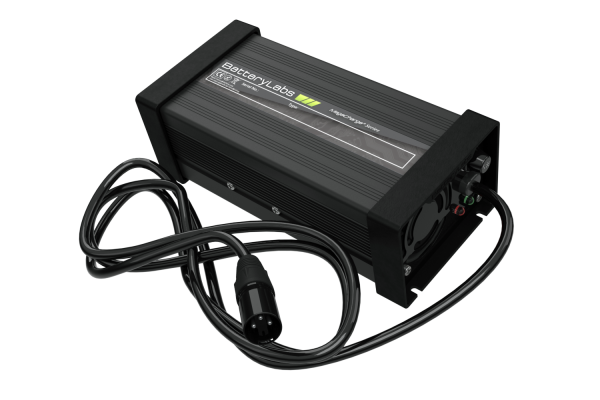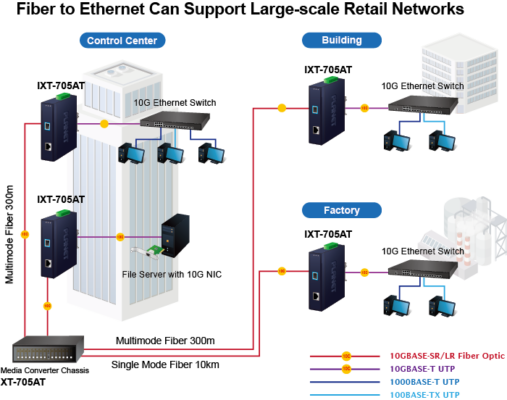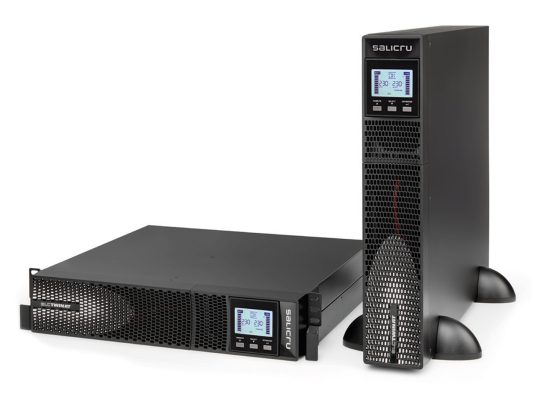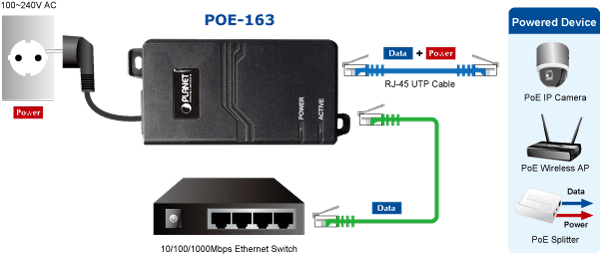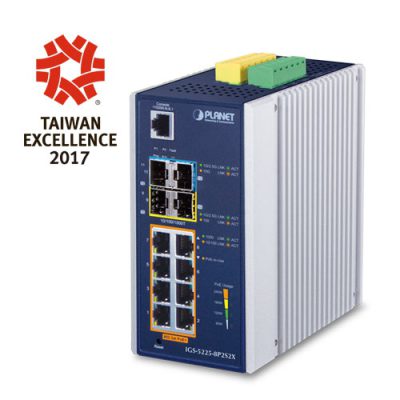- Veilig shoppen Gratis verzending in NL vanaf € 150,- Ruim assortiment
- Veilig shoppen Gratis verzending in NL vanaf € 150,- Ruim assortiment
- Home
- Batterij setsBatterij Sets Shop4power levert batterij sets uit voorraad voor veel verschillende toepassingen. U vindt bij ons batterijen voor UPS systemen voor elektrische scooters, scootmobiels en voor golftrolleys. Uiteraard leveren wij ook de laders voor de batterijen / accu’s. Voor fietsaccu’s hebben wij een carry-in oplossing (bel ons voor info).
-
-
-
Shop4power levert batterij sets uit voorraad voor veel verschillende toepassingen. U vindt bij ons batterijen voor UPS systemen voor elektrische scooters, scootmobiels en voor golftrolleys.
-
- UPS batterijen - RBCUPS vervangingssets – RBC De batterijen die wij leveren voor uw UPS systemen zijn hoge kwaliteits accu’s die speciaal geschikt zijn voor de toepassing in deze systemen. Bij APC heten deze sets RBC (met een getal erachter. Dit staat voor Replacement Battery Cartridge. Wij hebben voor iedere UPS de juiste batterij met de beste prijs/kwaliteit verhouding waardoor u altijd het meeste waar voor uw geld ontvangt. Heeft u vragen of kan u een bepaald type batterij niet vinden neem dan contact met ons op via de Chat of bel ons even op: 085 401 92 30
- Accu's voor recreatieAccu’s voor varen en vissen In de water- en hengelsport wordt de elektrische accu steeds meer toegepast, om daar gebruik van te maken is het wel van belang dat de accu ook robuust genoeg is voor deze toepassingen. Daarom hebben we de MegaUMPF Speciaal ontwikkeld voor de hengel- en watersport. Deze accu’s voor recreatie zijn extreem robuust en afgewerkt met stevige rubber randen.
- Caravan mover accu'sCaravan mover accu’s Merkt u dat de Caravan mover steeds moeilijker werkt? Ontdek de nieuwe en vervangende caravan mover accu’s van Shop4Power. Zo kunt u nog eenvoudiger en beter uw zware caravan op de gewenste plek zetten. Wacht niet te lang met het vervangen van uw accu, want niets is vervelender dan een haperende caravan mover.
- Vissen en elektrisch varen
- Laders voor recreatie accu's
- Golftrolley Accu'sGolftrolley Accu Net een mooie klap op hole 13 gehad en uw elektrische trolley geeft het op. De batterij is leeg. Wat nu? Dit is frustrerend, de elektrische golf trolley is zwaarder dan een gewone trolley, tijd voor een nieuwe accu! Onze speciale aanbieding: de LiFePo4 accu’s leveren wij momenteel met gratis:- Lader- T-bar connector- Draag / beschermtasje. Onze accu’s zijn van hoge kwaliteit en getest volgens strenge normen. Bij Shop4Power koopt u kwaliteit accu’s / batterijen waar u veel plezier aan zult beleven. Weet u niet exact welke accu past op uw Golftrolley? Neem gerust contact met ons op voor advies op maat. Onze specialisten staan klaar om u van advies te voorzien.
- LadersLaders Elektrisch Vervoer Alle laders in ons assortiment in één categorie. De laders zijn uit voorraad leverbaar en hebben 2 jaar garantie. Bestel nu en krijg morgen geleverd. In deze categorie vindt u een assortiment van laders van Shop4power die passend zijn bij de aangeboden scooter accu’s, scootmobiels, elektrische fietsen etc, voor zowel lood, lood-gel, Lithium-Ion en LiFePo4.
-
- Scootmobiel accu'sScootmobiel accu’s Een scootmobiel heeft u met een reden. Wanneer de actieradius terug loopt is het tijd om de batterijen te vervangen. Al is het voor de zekerheid zodat u niet stil komt te staan. Dat snappen wij. Wij hebben alle typen batterij voor u. Ziet u uw blok niet staan neem dan even contact met ons op? Wij kunnen altijd de juiste scootmobiel accu voor u regelen. Neem contact op via info@shop4power.nl, chat via de website of bel ons: 085-401 92 30.
- Elektrische Scooter Accu'sElektrische Scooter Accu’s De webshop shop4power biedt u veel keuze voor een batterij / accu voor uw elektrische scooter. Wij hebben een enorm assortiment aan Lood-Zuur accu’s, GEL accu’s en Li-Ion accu’s en LiFePo4 accu’s. De accu’s zijn uit voorraad leverbaar, vandaag besteld vandaag verzonden.
- Lithium Accu'sLithium Scooter Accu’s / Batterijen Om u een ruime keuze te bieden in de lithium scooter accu’s bieden wij u lithium-ion batterij oplossingen en LiFePo4 batterij oplossingen. Dit zijn de batterijen die bij toepassing in scooters de beste resultaten geven. Wij leveren uit voorraad een groot assortiment aan batterijen en laders uit. Komt u er niet uit, chat gerust met ons of bel ons op: 085-401 92 30 Meer informatie
- Lood Accu complete setsLood Accu’s Complete Sets De complete oplossing voor batterijen in elektrische scooters zijn lood accu’s mét de juiste lader erbij. Bij Shop4Power leveren wij de beste lood-accu’s of ook wel lood-batterijen genoemd tegen de scherpste prijzen. Daarnaast leveren wij uit voorraad. Hierdoor heeft u uw bestelling altijd snel in huis. U hoeft alleen nog maar de juiste stekker aan uw lader te kiezen.
- Lood Accu'sLood Accu’s / Batterijen De standaard oplossing voor batterijen in elektrische scooters zijn lood accu’s. Wij leveren de beste lood-accu’s, lood-batterijen tegen de scherpste prijzen. Alle lood accu’s worden uit voorraad geleverd.
- Lood-Gel accu'sLood GEL Accu’s / Batterijen Ontdek de hoge kwaliteit Gel-accu’s in het assortiment van Shop4power. Heeft u al een set GEL-accu’s? Dan is het verstandig deze ook weer door gel-accu’s te vervangen. De lader die u heeft is namelijk speciaal geschikt is voor GEL-accu’s. Door uw Lood Gel Accu te vervangen door een gelijke soort gel-accu bespaart u uzelf de kosten van een nieuwe later t.w.v. € 100,=
- Indicatoren Accu's
- Laders Elektrisch vervoerLaders Elektrische Scooters In deze categorie vindt u een assortiment van laders van Shop4power. Deze laders zijn passend bij de aangeboden scooter accu’s, zowel lood, lood-gel, Lithium-Ion en LiFePo4. Vindt u de lader die u zoekt niet in deze categorie? Neem dan contact met ons op via chat of telefoon, want wij leveren nog veel meer laders dan op hier aangegeven.
-
- Intercel blokken losIntercel blokken los – RBC Wij leveren in de batterijsets die wij aan u aanbieden over het algemeen de batterijen van Intercel, de Cellpower en de PBQ blokken. Deze blokken zijn van zeer goede kwaliteit en doen wat ze beloven en waarvoor ze bedoeld zijn. In deze categorie kunt u de blokken los kopen voor al uw toepassingen. Let wel! Setprijzen zijn over het algemeen wat lager.
- CPXC High Energy Carbon BatterijDe nieuwste ontwikkeling op het gebied van Lood batterijen, de Lead Carbon, de Lood Carbon batterij. Deze Lood-Carbon batterij is exact wat de naam al zegt, het is een VRLA (valve regulated lead acid) batterij met een toevoeging van Carbon. De batterij is nog steeds een AGM batterij met een veel langere levensduur. Kortom, alleen maar voordelen. Daarnaast heeft de batterij ook twee jaar fabrieksgarantie.
- CP Multi Purpose AGM batterij
- CPL Long Life AGM batterij
- CPH High Rate AGM batterij
- CPW Long Life High Rate AGM batterijen
- CPC Cyclic AGM batterij (600 Cycli)
- CPX Extreme Cyclic AGM batterij (800 Cycli)
- CPG Gel accu's
- PBQ General Purpose Batteries
- PBQ LongLife BatterijenPBQ Longlife Batterijen Intercel voert twee merken batterijen, de CellPower en de PBQ longlife batterijen. In deze categorie vindt u de Long Life batterijen van het PBQ merk.
- PBQ FA Front Terminal
- LF LiFePo4 batterijenLiFePo4 Batterijen Ontdek hieronder ons uitgebreide assortiment LiFePo4 (LFP4) batterijen van Intercel, de PBQ LF Range.
- CLN Lithium Accus
- Intercel blokken losIntercel blokken los – RBC Wij leveren in de batterijsets die wij aan u aanbieden over het algemeen de batterijen van Intercel, de Cellpower en de PBQ blokken. Deze blokken zijn van zeer goede kwaliteit en doen wat ze beloven en waarvoor ze bedoeld zijn. In deze categorie kunt u de blokken los kopen voor al uw toepassingen. Let wel! Setprijzen zijn over het algemeen wat lager.
-
-
- Industrieel EthernetIndustrieel Ethernet De Planet Industriële Ethernet oplossingen zijn hoog betrouwbaar en veilig om zo een constante bedrijfsvoering te verzekeren in agressieve omgevingen zoals fabrieken, buiten opstellingen en op plekken met extreme temperaturen. Op zoek naar een oplossing voor industrieel ethernet? Bij Shop4Power slaagt u gegarandeerd. Nagenoeg alle producten zijn uit voorraad leverbaar.
-
-
-
De Planet Industriële Ethernet oplossingen zijn hoog betrouwbaar en veilig om zo een constante bedrijfsvoering te verzekeren. Wij leveren nagenoeg alle Planet producten uit voorraad.
-
- Managed Industriële Ethernet SwitchManaged Industriële Ethernet Switch De Managed Industriële Ethernet Switches van Planet en Scodeno zijn geschikt om toe te passen in de meest agressieve omgevingen. De behuizingen van de managed industriële ethernet switches zijn speciaal gemaakt om deze agressieve omgevingen te weerstaan. Het temperatuurbereik van deze switches is zeer groot waardoor ze ook bestand zijn tegen hogere, maar ook lagere temperaturen. De producten zijn uit voorraad leverbaar.
- Modular Din-rail SwitchDe Modulaire Din-rail internet switch is uitbreidbaar met verschillende modules. Deze modules kunnen eenvoudig in de master geschoven worden.
- TSN Ethernet Switch
- Rack-Mount SwitchRack Mount Switch Ontdek ons uitgebreide assortiment Rack Mount Switches van Planet. De switches hebben een geweldige prijs / kwaliteit verhouding en zijn uit voorraad leverbaar.
- DIN-Rail L2+ Ring Gigabit EthernetDin Rail L2 Ring Gigabit Ethernet De Planet Din Rail Industriële L2+ Ring Gigabit Ethernet Switches zijn uit voorraad leverbaar bij shop4power. Deze switches steken met kop en schouders boven de concurrentie uit als het gaat om de prijs kwaliteit verhouding.
- DIN-Rail L2/L4 Gigabit EthernetDin-Rail L2/L4 Gigabit Ethernet De Planet Din Rail Industriële L2/L4 Managed Gigabit Switches zijn uit voorraad leverbaar bij shop4power. Door de uitvoering in een robuuste behuizing die eenvoudig past op een Din Rail kunnen deze door shop4power geleverde switches snel en eenvoudig in een schakelkast of een systeemkast geklikt worden.
- Unmanaged Ethernet SwitchUnmanaged Industriële Ethernet Switch Unmanaged Industriële Ethernet Switches zijn in basis Plug-and-Play switches. U hoeft niets meer in te stellen, de switch doet wat hij moet doen. Shop4power heeft een groot assortiment Din-rail industrieel Ethernet switches die niet gemanaged zijn, in zowel Gigabit als Fast ethernet uitvoering. De beste prijs/kwaliteit verhouding in de markt.
- DIN-Rail Gigabit UnmanagedUnmanaged Din-Rail Ethernet Unmanaged Industriële Gigabit Ethernet Switches zijn in basis Plug-and-Play switches. U hoeft niets meer in te stellen, de switch doet wat hij moet doen. Shop4power heeft een groot assortiment Din-rail industrieel Ethernet switches die niet gemanaged zijn, de switches in deze categorie zijn Gigabit Switches. Uit voorraad leverbaar.
- DIN-Rail Fast Media Converter
- DIN Rail Power Supply
- Flat-Type EthernetIndustrieel Flat-Type Ethernet De Planet Networking & Communication Flat-Type Ethernet Switches zijn switches die speciaal gebouwd zijn voor toepassing op locaties waar het van belang is dat de switch zeer weinig diepte heeft. De switch moet plat zijn. Deze speciale Flat-Type switches zijn voorzien van slob-gaten aan de zijkanten waarmee ze eenvoudig met twee schroeven opgehangen kunnen worden. De meeste uitvoering zijn uit voorraad leverbaar.
- Managed Flat-type Ethernet SwitchManaged Flat-Type Ethernet De Planet Flat-Type systemen zijn bij uitstek geschikt voor montage op de lastigste plekken.Wandmontage, met bijgeleverde magneten op een metalen plaat, etc.
- Unmanaged Flat-type Ethernet SwitchUnmanaged Flat-Type Ethernet De Planet Flat-Type systemen zijn bij uitstek geschikt voor montage op de lastigste plekken. Wandmontage, met bijgeleverde magneten op een metalen plaat – Bekijk ons gehele assortiment.
- Managed Industriële Ethernet SwitchManaged Industriële Ethernet Switch De Managed Industriële Ethernet Switches van Planet en Scodeno zijn geschikt om toe te passen in de meest agressieve omgevingen. De behuizingen van de managed industriële ethernet switches zijn speciaal gemaakt om deze agressieve omgevingen te weerstaan. Het temperatuurbereik van deze switches is zeer groot waardoor ze ook bestand zijn tegen hogere, maar ook lagere temperaturen. De producten zijn uit voorraad leverbaar.
-
- Industriële automatisering
- Duurzaam PoE Systeem
- EN50155 EthernetIndustrieel EN50155 Ethernet De Planet Networking & Communication EN50155 Ethernet systemen zijn specifiek ontworpen voor de automotive markt. De systemen zijn extreem bestendig tegen stof, water, hoge temperaturen en dynamische belastingen zoals schokken en stoten. Verschillende uitvoeringen blijven zelfs functioneren bij onderdompeling.
- Industriële Media ConverterIndustriële Media Converter De Industriële Media Converter range is uitgevoerd met een “Slim-type” metalen IP30 behuizing voor een snelle plaatsing in een industriële veeleisende omgeving. Doordat de converters kunnen functioneren in een temperatuurrange van -40 – +75 graden Celsius kunnen deze Industriële media converters worden geplaatst in nagenoeg zware moeilijke omgeving.
-
- Industrieel Power over EthernetIndustrieel Power over Ethernet Power over Ethernet is zo langzamerhand een wijd verbreide techniek die nog steeds met sprongen vooruit gaat. Niemand had durven denken dat er in de zeer nabije toekomst vermogens van bijna 100 Watt over het datakabeltje gestuurd zouden kunnen worden terwijl nog steeds een dataverbinding van 1 Gigabit in stand wordt gehouden.
- Rack L3 Ring Managed Gb PoE SwitchZoals de titel doet vermoeden vindt je in deze categorie de industriële Rack-mount Gigabit Managed switches L3 met Ring technologie die Power over Ethernet kunnen leveren.
- Din-Rail L3 Ring Managed Gb PoE Switch
- Din-Rail L2+ Ring Managed Gb PoE Switch
- Din-rail L2/L4 Managed Gb PoE Switch
- Flat-type L3 Ring Managed Gb PoE Switch
- Flat-type L2+/L2 Ring Managed Gigabit PoE Switch
- Din-rail Unmanaged Gb PoE Switch
- Din-rail Managed Fast Ethernet PoE Switch
- Din-rail Unmanaged Fast Ethernet PoE Switch
- PoE Injector/Splitter/Extender
- PoE Media Converter
- Fiber Optical Bypass Switch
- Industrieel Power over EthernetIndustrieel Power over Ethernet Power over Ethernet is zo langzamerhand een wijd verbreide techniek die nog steeds met sprongen vooruit gaat. Niemand had durven denken dat er in de zeer nabije toekomst vermogens van bijna 100 Watt over het datakabeltje gestuurd zouden kunnen worden terwijl nog steeds een dataverbinding van 1 Gigabit in stand wordt gehouden.
-
-
- UPS systemenUPS Systemen De UPS systemen van shop4power munten uit door een perfecte prijs/kwaliteit verhouding. Wij hebben de meest gangbare systemen in voorraad en kunnen dus binnen een paar dagen de meest uitgebreide UPS systemen leveren. Daarnaast ontvangt u bij ons advies van echte experts.
-
-
-
Wij hebben de meest gangbare UPS systemen in voorraad en kunnen dus binnen een paar dagen leveren.
-
- On-line (VFI) UPSOn-Line (VFI) UPS Systeem De meest betrouwbare UPS is een VFI UPS, ofwel On-line UPS ofwel dubbel conversie UPS. De term On-line en Dubbel Conversie worden nog wel eens misbruikt, de term VFI is wel redelijk afgeschermd. VFI staat voor Voltage and Frequency Independent. Deze term betekent dat de UPS dus frequentie en spannings onafhankelijk is. De UPS zorgt er dus voor dat de UPS nog niet naar batterij hoeft te schakelen, de UPS hoeft nog niet de batterij te gebruiken als de spanning of de frequentie varieert.
- Line-Interactive UPSLine-interactive UPS Systemen De Line-Interactive UPS is de meest verkochte UPS. Het UPS systeem is compact. De omschakeltijd tussen gelijkrichter en batterij is slechts 5-10ms. De batterijen bevinden zich doorgaans in de UPS. Deze UPS systemen zijn uit voorraad leverbaar.
-
- Rack UPS systemenRack UPS Systemen Alle Rack UPS systemen op een rijtje. De meeste rack systemen zijn tevens geschikt voor plaatsing op een voet. De breedte van de UPS systemen zijn geschikt om in een 19-inch rack te plaatsen. In deze categorie vindt u zowel on-line als ook line-interactive en off-line UPS systemen. Voor de exacte verschillen tussen deze systemen kunt u kijken op onze FAQ pagina. Voor meer specifieke vragen over UPS systemen kunt u ons bellen op: 085-4019232. De meeste van de UPS systemen kunnen wij uit voorraad leveren.
- Off-line UPSOff-line UPS De Off-line UPS systemen bieden geen filtering, alleen een batterijbackup. De Nano systemen zijn mooie compacte UPS systemen.
-
- Tower UPS systemenTower UPS Systemen Alle Tower UPS systemen op een rijtje. Deze systemen zijn geschikt voor plaatsing op de grond of op een bureau en op andere plekken. In deze categorie vindt u zowel on-line als ook line-interactive en off-line UPS systemen. Voor de exacte verschillen tussen deze systemen kunt u kijken op onze FAQ pagina. Voor meer specifieke vragen over UPS systemen kunt u ons bellen op: 085-4019232. De meeste van de UPS systemen kunnen wij uit voorraad leveren.
- Smart PDU'sSmart PDU’s De 4Power Smart PDU’s van shop4power worden speciaal voor ons gefabriceerd en zijn leverbaar in nagenoeg iedere denkbare configuratie. Uit alle opties voor deze spanningssloffen leveren wij er een groot aantal uit voorraad binnen een dag uit.
-
-
- Power over EthernetPower over Ethernet Power over Ethernet biedt de mogelijkheid om over de datakabel de voeding te verzorgen voor uw IP-camera, access point, router etc. Daarnaast wordt PoE ook gebruikt om de maximale lengte van de datakabel te vergroten tot meer dan 100 meter (LRP). Nagenoeg alle Planet PoE producten zijn uit voorraad leverbaar.
-
-
-
Power over Ethernet biedt de mogelijkheid om over de datakabel de voeding te verzorgen. Nagenoeg alle Planet PoE producten zijn uit voorraad leverbaar.
-
- PoE injector hubPoE injector HUB De Power over Ethernet Injector HUB’s zijn injectoren met meer dan 1 poort. Alle enkelpoorts POE injectoren vindt u in de PoE Injector categorie. Bij de POE Hub’s vindt u geen passive POE. De HUB’s zijn uit voorraad leverbaar.
- PoE SplitterPoE Splitter
- PoE injectorPlanet PoE injectoren / extenders
- PoE SwitchPower over Ethernet Switch De PoE switches hebben de laatste jaren een enorme vlucht genomen, er is veel vooruitgang geboekt op alle vlakken maar vooral op het te voeren POE vermogen. Een switch is weer wat anders dan een POE HUB. De Switches zijn in veel uitvoeringen beschikbaar. Het aantal poorten varieert van 4 tot wel 48 poorten.
-
-
- Ethernet
-
-
-
Ontdek alle ethernet producten van Shop4Power. Waaronder Media Conversion, IP Camera’s, Industrieel Ethernet en Long Reach POE. Wij leveren nagenoeg al onze producten uit voorraad.
-
- Ethernet Extender
- Long Reach PoE ProductenLong Reach PoE Producten
- Patch kabelsPatch kabels – glasvezel Shop4power levert patch kabels voor uw glasvezel toepassingen. Wij hebben hiervan het meest gebruikte ook op voorraad en kunnen dus de volgende dag leveren. Veelal zijn patch kabels gemakkelijker van een nieuwe kabel maken, zeker als u van tevoren weet dat u meerdere patch kabels van een bepaald type nodig heeft. U hoeft alleen maar “Multimode – Singlemode te kiezen met de juiste connector en de juiste lengte en type kabel en u heeft de kabels de volgende dag in huis.
-
-
- SwitchesEthernet Switches Shop4power levert Planet Ethernet en E-Link Switches voor al uw toepassingen. De meeste producten op de webshop van shop4power zijn uit voorraad leverbaar tegen de scherpste prijzen. De Planet Switches uiterst betrouwbaar en veilig om zo een constante bedrijfsvoering te verzekeren in elke bedrijfsomstandigheid.
-
-
-
Shop4power levert Planet Ethernet en E-Link Switches voor al uw toepassingen. Wij leveren de meeste producten uit voorraad én tegen scherpe prijzen.
-
- 10G Switches
- Gb SwitchesGb Switches Alle Gb+ switches van Planet op een rijtje. In deze categorie kunt u de verschillende typen switch selecteren op: Aantal poorten, Aantal SFP poorten, wel of geen POE, het POE-Type, wel of geen ventilator, industriële uitvoering of niet, Managed of on-managed, etc. Deze switches levert Shop4power uit voorraad. Wij hebben nagenoeg alle systemen op voorraad zodat u morgen uw switch in huis hebt.
- Managed Layer 3 SwitchManaged Layer 3 Switch
- Managed Layer 2 SwitchManaged Layer 2 Switch
-
-
- MerkenMerken In de loop der jaren heeft SHOP4POWER een aantal Respectabele merken aan zich kunnen binden waar we echt 100% achter kunnen staan. Deze merken hebben zich bewezen op het gebied van kwaliteit, betrouwbaarheid, service en aftersales. Deze eigenschappen maken een merk tot een goede partner voor zowel Shop4power alsook voor U, onze klant. Juist voor U zijn deze eigenschappen belangrijk, hierdoor weet u wat u koopt en dat u op de producten kunt vertrouwen.
-
-
-
Shop4Power is Planet-specialist. Wij leveren Planet Producten snel en uit voorraad. Daarnaast hebben wij ook een aantal andere respectabele merken aan ons gebonden waarbij wij 100% achter de kwaliteit, betrouwbaarheid & service staan.
-
(Industriële) Ethernet merken
- PlanetPlanet Industriële Ethernet Oplossingen De Planet Industriële Ethernet oplossingen zijn hoog betrouwbaar en veilig om zo een constante bedrijfsvoering te verzekeren in agressieve omgevingen zoals fabrieken, buiten opstellingen en op plekken met extreme temperaturen. Nagenoeg alle producten zijn uit voorraad leverbaar.
- ScodenoScodeno Industrieel De nieuwste telg in de Shop4power familie is Scodeno industriële Switches, media converters en patch kabels. Scodeno is een Chinese fabrikant die zijn sporen heeft verdient op de Aziatische markt. Shop4power heeft dit bedrijf zeer nauwkeurig onderzocht op onder andere kwaliteit, leverbetrouwbaarheid en duurzaamheid. De producten die wij op dit moment van Scodeno leveren zijn: Switches, Media Converter en Patch Kabels. Natuurlijk leveren wij ook nog steeds de vertrouwde industriële producten van Planet Networking & Communication
-
Batterij & lader merken
- Shop4powerOver Shop4Power Shop4Power, de beste en meest kwalitatieve webshop voor al uw power wensen. Voor Power over Ethernet producten, switches, industrieel ethernet producten, PDU’s, Scooter accu’s, UPS batterijen, golftrolley accus bent u bij ons aan het juiste adres. Daarnaast zijn wij Planet specialist. Wij leveren nagenoeg alle producten uit voorraad, dus vandaag besteld is vaak volgende werkdag in huis. Uiteraard kunt u bij ons terecht voor advies over de bovengenoemde producten, wij hebben specialisten voor alle gebieden in huis en is er een keer een vraag waar wij geen antwoord op hebben dan kunnen wij altijd ruggespraak houden met de product specialisten in de fabriek. U kunt contact met ons opnemen door middel van e-mail, telefoon en chat op deze website. Wij helpen u graag.
- Cellpower
- Batterylabs
- PBQ
- TBS
- LEAB
-
-
- SaleAanbiedingen De aanbiedingen in deze categorie zijn scherper in prijs dan de producten in de “normale” categoriën. De goedkoopste oplossingen uit verschillende categorieën.
